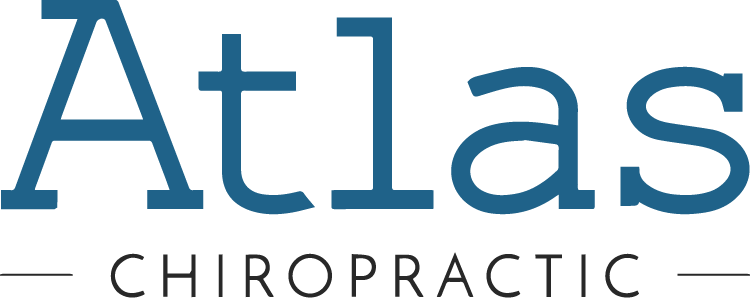Pregnancy is a natural process in life and it is well known that receiving prenatal care from a provider is key to having a healthy pregnancy. While receiving care from a midwife and/or obstetrician-gynecologist is very important, there are also other prenatal providers than can be seen for the management of symptoms that come along with pregnancy. One type of provider that can support those prenatally are Webster Certified chiropractors. Receiving this form of chiropractic care is a way to help pregnant women experience a more comfortable pregnancy (and eventual birth) by helping the body respond to the changes that are taking place in a better way. Which, in turn, can help create an ideal environment for fetal growth and development.
Dr. Lindsey Rimes DC is the chiropractor on staff at Atlas Chiropractic of Boulder that has been awarded her Certificate of Proficiency in the Webster Technique by the International Chiropractic Pediatric Association (ICPA).
Table of Contents
ToggleWhat is the Webster Technique?
The Webster Technique is a chiropractic technique that was developed for pregnant women initially by Dr. Larry Webster, which was later modified by other chiropractors of pediatric and prenatal specialty. The definition of the Webster Technique as stated by the International Chiropractic Pediatric Association is: “a specific chiropractic analysis and diversified adjustment. The goal of the adjustment is to reduce the effects of subluxation and/or SI joint dysfunction. In doing so neuro-biomechanical function in the sacral/pelvic region is improved.” The premise of this technique is to focus on aligning the pelvis and preparing the woman’s body for birth. As the body changes and the joints loosen, the pelvis experiences many changes and the Webster Technique is there to combat those changes.
Inclusion of Other Techniques
Dr. Lindsey Rimes DC combines the Webster Technique with the use of upper cervical chiropractic care. In order to generate listings (how the patient needs to be adjusted based on their anatomy) Dr. Rimes performs a series of non-invasive checks in order to do so, since x-rays are not considered safe for pregnant women. These checks consist of certain prone leg checks, postural analysis and pressure tests. Based on these results Dr. Rimes will utilize the Activator or the Toggle Recoil technique to adjust the patient, which are both low force techniques that lack excessive twisting, cracking and popping.
The upper cervical component of care is focused on maintaining the absence of nerve interference within the body through focusing on the first two vertebrae in the spine. During pregnancy, it is essential to maintain as little nerve interference in the body as it allows the body to respond to its changes more favorably. Addressing the misalignments in the upper cervical (upper neck) region along with the use of the Webster Technique promotes optimal nervous system and physiological function in a woman in preparation for childbirth.
Goals of the Webster Technique
Physiological changes that lead to a difficult birth are widely accepted in the field of obstetrics, especially when it comes to changes with the pelvic region. In Chapter 23 of the Williams Obstetrics textbook, it is noted that there are three different causes of dystocia, or difficult birth. These three causes are: power, passage and passenger. These are also the three causes that the Webster Technique focuses on relieving.
Williams defines power as irregularities in expulsive forces. In the context of childbirth, these forces are linked to the uterus’s contraction ability. Additionally, the voluntary muscles of the mother during labor may experience weakness or insufficiency. Chiropractic adjustments have the potential to enhance uterine function and improve the performance of voluntary muscles by facilitating sufficient nerve supply.
Williams denotes passage as a pelvis of sufficient diameter to facilitate smooth childbirth. The textbook also notes that sacral displacement can reduce this diameter. Chiropractic adjustments can help rectify pelvic misalignment and sacral displacement, thereby promoting a more favorable birthing environment. The overall goal of working toward pelvic alignment is to allow the woman to maintain an optimal birthing environment for the baby ultimately encouraging an easier birthing process.
Lastly, the passenger corresponds to the fetus themself. Maintaining an aligned pelvis and using myofascial techniques also promotes optimal fetal positioning. When pelvic misalignment occurs, it affects the muscles and ligaments responsible for ensuring the proper positioning of the fetus. These ligaments include the broad ligament, the round ligament, and the uterosacral ligament (amongst others), all of which are anchored in the pelvic region. Misalignment causes tension to build up in these ligaments, potentially restricting the baby’s ability to maneuver into the optimal birthing position. As a Webster Certified chiropractor works with the muscles and ligaments that can cause torsion of the uterus and misalignment of the pelvis, the baby can potentially move more freely than before.
When to Start the Webster Technique
While the Webster Technique has parts to the protocol that can be used on all weight-bearing individuals, this technique primarily focuses on pregnant women. Many associate the Webster Technique with being received near the end of pregnancy to encourage optimal fetal positioning. However, receiving the Webster Technique is safe and recommended to be received from day one (and prior to then) as well. It is never too early to start encouraging the body to maintain an optimal environment for a more comfortable pregnancy and smoother birth.
In the early stages of pregnancy, the hormone Relaxin starts to increase in the body. This causes joints, muscles and ligaments to loosen and help prepare the body (especially the pelvis) for supporting fetal development and for childbirth itself. As the joints, muscles and ligaments begin to loosen, pain can start to appear. While the body does indeed begin to move more fluidly, this also means that misalignments happen more fluidly as well, which can cause restrictions and tensions to arise. This is why receiving the Webster Technique, and chiropractic in general, can be an essential part of managing pain while pregnant
While aches and pains during pregnancy are considered normal (to an extent), that does not mean that they cannot be decreased. Webster Certified chiropractors aim to make pregnancy a more comfortable experience for the pregnant woman and to help create a healthy and freely movable environment for the baby.
Changes During Pregnancy
Pregnancy initiates a cascade of physiological adaptations in order to support fetal development and prepare the mother for childbirth. Hormonal fluctuations, especially increased levels of estrogen and progesterone, play a pivotal role in supporting uterine growth, promoting blood flow to the placenta, and further necessary adaptations. While it may not be apparent to onlookers, from the moment of fertilization, the body starts to kick into gear to maintain the pregnancy. The human chorionic gonadotropin hormone (HCg) or pregnancy hormone spikes up which is what leads to that positive pregnancy test and the body continues to work hard to provide an optimal environment for a healthy pregnancy. As time goes on one hormonal event triggers the next and the body begins to adapt and makes the changes that it needs to make.
As the pregnancy progresses, the uterus expands to accommodate the growing fetus, exerting pressure on surrounding organs and tissues. These are the changes that can lead to things like constipation, acid reflux and/or flatulence amongst many other symptoms. Additionally, alterations in cardiovascular, respiratory, and musculoskeletal systems further shine light onto the intricate process of reproduction.
Cardiovascular and Respiratory Changes
When pregnant, a woman’s blood volume can increase approximately 40%-50%. These increases can lead to changes such as appearing flushed, development of varicose veins and nasal congestion. In terms of respiratory changes, as many could imagine, as the uterus continues to grow it can compress the diaphragm which can change a woman’s breathing pattern due to reducing their lung capacity. However, there is also an increased demand for oxygen with each breath, which further changes their breathing patterns. With the cardiovascular and respiratory changes that take place during pregnancy, supporting an optimal functioning nervous system is of high importance.
Regarding the changes in breathing patterns and anatomy concerning the respiratory system, relieving tension and nerve interference is important. Focusing on both of these can help relieve tension of the soft tissue that is associated with the rib cage and the overall process of breathing. Supporting correct posture is also a method of indirectly supporting the respiratory system. A woman’s posture adjusts in many ways in order to support the body through the changes that are occurring, but chiropractic care can help the body experience those changes more fluidly and with less effects. Maintaining as correct of a posture as a woman can during pregnancy can do her much good in terms of symptom management and overall wellness.
With the cardiovascular system, while chiropractic will not directly influence the cardiovascular system, it can help manage some of the symptoms associated with cardiovascular changes. For example, pregnancy can be a stressful time, and chronic stress may contribute to cardiovascular issues such as high blood pressure. Chiropractic adjustments may help reduce stress and promote relaxation by releasing tension in the muscles and promoting the release of endorphins, which are natural stress-relieving hormones. Chiropractic can also help aid some of the effects that poor posture can have on the cardiovascular system during pregnancy. Poor posture can strain the cardiovascular system by compressing blood vessels and reducing blood flow. Chiropractic adjustments aim to improve spinal alignment, which can help correct posture and alleviate pressure on blood vessels, potentially improving circulation and cardiovascular function.
Musculoskeletal Changes
While pregnancy embodies the miracle of life, it is also accompanied by a spectrum of discomforts and challenges. Expectant mothers may encounter a variety of issues ranging from morning sickness and fatigue to more pronounced discomforts such as pelvic misalignment and sacral subluxation. Pelvic misalignment, characterized by an imbalance in the pelvic bones, can lead to musculoskeletal discomforts, compromised posture, and even hindered fetal positioning. Similarly, sacral subluxation, a misalignment in the sacrum, may contribute to sciatic nerve compression, lower back pain, and discomfort during labor. These issues, though common, display the importance of proactive prenatal care and holistic approaches to address maternal well-being.
When pregnant, the hormone relaxin increases, which causes the joints, muscles and ligaments to relax in order to prepare the body for childbirth. These changes, however, can lead to the aforementioned pelvic misalignments and also torsion and/or tension of the ligaments associated with the uterus. Through making gentle and precise pelvic adjustments and focusing on the muscles and ligaments that tend to cause the most problems, the Webster Technique can be an effective method of care to manage discomfort during pregnancy.
When it comes to feeling pain in places other than the low back region, such as the neck, chiropractic care can help as well. As the body adjusts to pregnancy changes occur in many other places in the body other than the low back and abdominal region. As postural changes take place, other parts of the body such as the upper back and neck have to make adaptations as well. These adaptations, causing slight structural changes, can lead to discomfort and pain which may be relieved through specific and gentle chiropractic adjustments–which Dr. Lindsey provides.
These symptoms are just the tip of the iceberg when it comes to what can happen during pregnancy and also, what chiropractic care can help with either directly or indirectly. A major component to recognize as a pregnant woman seeking care to help manage symptoms that arise from pregnancy is that the goal of complete cessation of any type of pain is unlikely; however, the goal of lessening the pain and making the pregnancy more manageable and a smoother childbirth more attainable. A woman’s body is constantly changing during pregnancy and pushing itself to its limits, despite being an entirely natural process. Aches and pains are going to happen, but the goal of a Webster Certified chiropractor is to make those aches and pains lessen so that their pregnancy can be a more enjoyable experience.
Postpartum Period
A woman’s body continues to experience hormonal changes even after childbirth. While breastfeeding women have a prolonged amount of hormonal changes, those who do not breastfeed still experience a significant amount of change months after delivering. The hormone relaxin tends to linger in an increased (but, decreased from the pregnancy levels) manner even in the postpartum period. This means that a woman’s joints are still loosened and more susceptible to misalignments and associated pain. Maintaining chiropractic care during this period is essential in helping the body recuperate after childbirth.
Aside from the Relaxin, after childbirth a woman’s body is physiologically exhausted from the rapid decrease in hormones and quick musculoskeletal changes. Supporting the body through the adaptations that the body will make while moving back to the original nongravid (not pregnant) state is essential. It is important to note that the body is likely to have changes that will remain present even after the recognized postpartum period is over–which is further reasoning why continued chiropractic care is important.
Research
A major focus on the Webster Technique is the encouragement of proper fetal positioning that can be impacted by intrauterine constraints (or, a force external to the fetus that interferes with normal fetal movement.) A survey sent out to hundreds of members of the International Chiropractic Pediatric Association asked providers if they used the Webster Technique in their office and if they have seen positive outcomes in fetal positioning before birth. While over a thousand forms were sent out, there were 112 that met the survey criteria. Ninety-two percent of those responses reported that the baby had moved from breech to cephalic position prior to birth (Pistolese RA).
In the Journal of Midwifery and Women’s Health, it was published that during a retrospective case series review, 16 out of 17 women had clinically significant improvements in their low back pain through the use of chiropractic care. Using a pain scale that rates pain from a series of 1-10, the overall group average converted from a 5.9 to a 1.5 at the termination of care. The clinically significant improvements were seen after approximately 4.5 visits (Lisi AJ). It is important to recognize that past that amount of time, it is still important to upkeep on care as the body continues to change in accordance with the pregnancy.
While the subsets of the research cases are small, the results are still significant enough to suggest that receiving the Webster Technique can prove to be beneficial in supporting optimal fetal positioning without posing the same risks as other more invasive methods.
Conclusion
Pregnancy is a natural process that, when experienced or observed, seems to be more of a phenomenon. The power that a woman’s body possesses in order to support the life and development of another human being is apparent in every step of the way. While pregnancy is quite a seemingly miraculous journey, there are common symptoms that tend to follow that journey. Even though symptoms are normal and are expected to happen due to the physiological changes occurring, the frequency and severity of the symptoms have the possibility of being managed through chiropractic care and the Webster Technique. While simultaneously supporting pelvic alignment and optimal fetal positioning, an ideal birthing environment is encouraged. Through instilling focus on pelvic alignment and myofascial maintenance of common muscles and ligaments aggravated during pregnancy, the Webster Technique serves as a valid and effective method of prenatal care that should be considered.
While this is not directly related to chiropractic care, if you or someone you know is in their postpartum period of pregnancy and are showing signs of postpartum depression, seek care or encourage them to seek care. Postpartum depression is a serious and very real condition that should not be taken lightly.
In conclusion, embracing the support of a Webster Certified chiropractor during pregnancy can be a vital addition to traditional prenatal care. These specialized chiropractors offer techniques that not only alleviate discomfort but also optimize the body’s ability to adapt and grow throughout pregnancy. By focusing on proper alignment and balance, they contribute to a smoother pregnancy and potentially easier labor. For expectant mothers in Boulder, CO, considering this holistic approach could enrich your prenatal journey, supporting both your well-being and the healthy development of your baby. As with any healthcare decision, it’s important to consult with your primary prenatal provider to ensure that chiropractic care is a suitable complement to your existing pregnancy care plan. Contact Atlas Chiropractic today.

Schedule your FREE 15 minute consultation with Atlas Chiropractic
At Atlas Chiropractic, our Greater Boulder area chiropractors specialize in providing relief for individuals experiencing back, neck, or shoulder pain, as well as those dealing with headaches or vertigo. We offer specialized chiropractic care and tailored spinal adjustments, along with expert opinions and advice.
Like this article? Spread the word!
Related Posts
May 3, 2024
Supporting Postpartum Wellness: The Role of Chiropractic Care in Recovery
Discover the vital role chiropractic care plays in postpartum wellness. Learn how…





